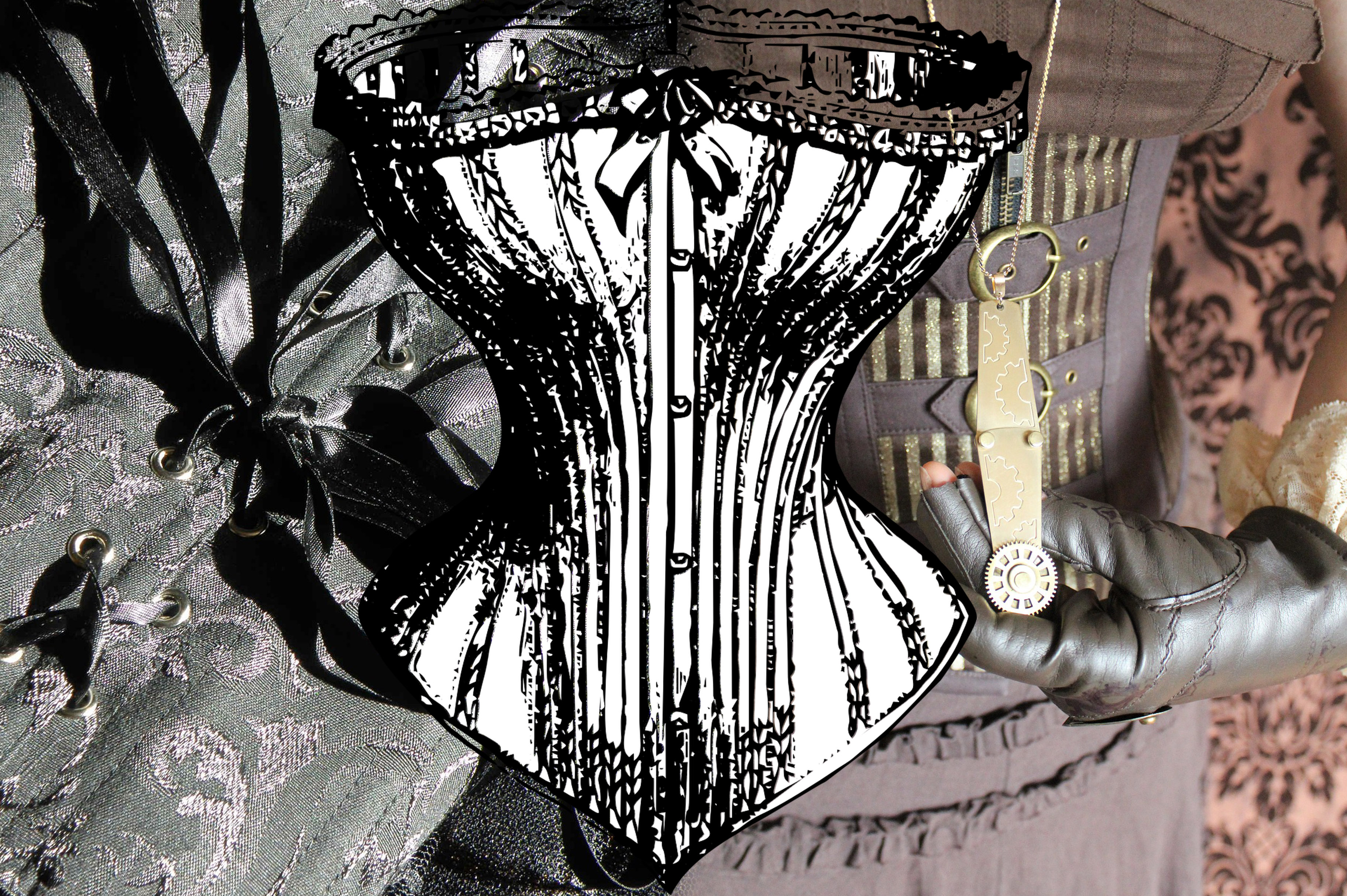Brief History of the Corset
Ahh, corsets; the well-hated fashion accessory has finally squirmed its way back into modern day fashion. Its tight laces, iron supports, and unbreathable countenance have earned  a horrible reputation. For hundreds of years, women have been fantasized to look curvy, like an S. However, the ribs and spine got in the way. So what did humanity do? Invent the corset (and starvation diets).
a horrible reputation. For hundreds of years, women have been fantasized to look curvy, like an S. However, the ribs and spine got in the way. So what did humanity do? Invent the corset (and starvation diets).
The origin of the corset is unknown. There are a few wall paintings in Rome depicting women wearing waist-cinchers. It gave women the curve they needed to entice men, as, without a spouse, women had no part of society. That is not to say that it was the men’s fault. Women often did this to themselves by supporting this fashion. It became overly popular during the 16th, 17th, and 18th century, due to productions made in France.
Many argue that the steel-boned corsets, dated back to the 16th century, were not used by women for fashion. Instead, now it is assumed that they were used by surgeons and doctors to help fix the straighten or reposition the spinal cord. There is no evidence that women wore the steel-boned or whale-boned corsets on a regular basis. Medical corsets are still used today to help relieve scoliosis.

The whale-body was a fashion accessory similar to the traditional corset, but it served a different purpose. The whale-body was meant to assist women in sitting perfectly straight, like the steel-boned corsets used by doctors. These beneficial corsets could have been launched by Catherine de Medici, during the 16th century.
By the 18th century, corsets could be worn over or under the dress. However, they were not meant to change the women’s appearance directly. It was only intended to help prop the back, so the women sat straighter for more extended periods. These whale-boned or steel-boned corsets could be worn during formal gatherings. It was deemed as a comfortable accessory.
Corsets were a practical tool, used by women to help support their back. When doing cumbersome chores, by the end of the day, their backs were aching and sore. The corset helped prevent these pains. It was a help instead of a hindrance. Numerous groups for equality and women’s rights today see the historical corset as a tortuous device meant to keep women in their place. Techniquely this is correct, as it kept women’s’ backs in place. Unbeknownst to the masses, men also wore corsets. The corset has a similar history to the high heel. It began with practicality and resulted in absurdity.

The corset lost its fame during the French Revolution, as royalty were usually the ones to use them. By the 1830s, corsets were reintroduced into different cultures, in both France and America. Only this time, corset had an impractical use.
Women began to compete silently with each other, attempting to have the slender figure. The corset was laced tighter and tighter, with one record mentioning the waist reaching to only 18 inches. Logically, this can harm the ribs and spinal cord instead of helping them. Thus the corset was deemed unhealthy by physicians and surgeons. Many women died during childbirth, due to deformities.
As World War 2 came charging through, the government asked women to stop buying corsets. Two whole battleships were built, using the 28,000 tons of metal liberated. As the war ended, so did the reign of corsets.
Did the history of corsets surprise you? It seems history has once again shown us that not everything is as it looks, or in this case, as its laced.






